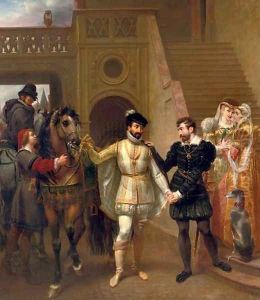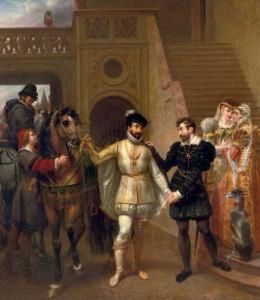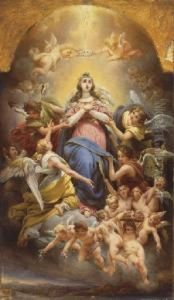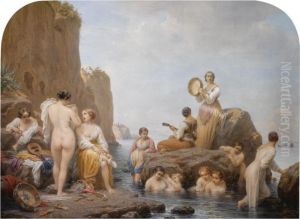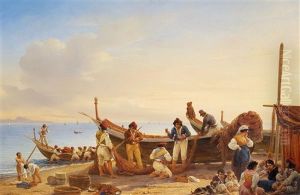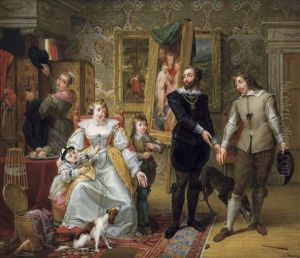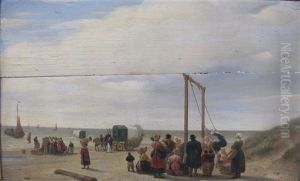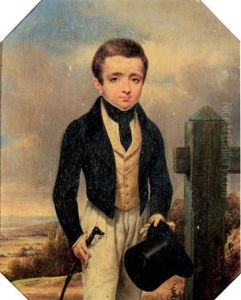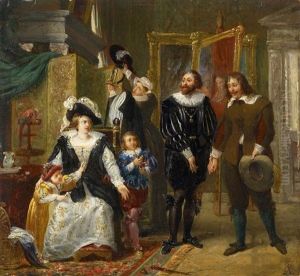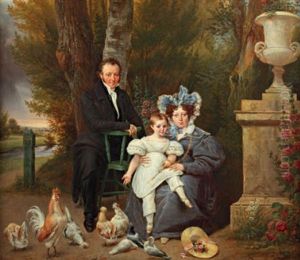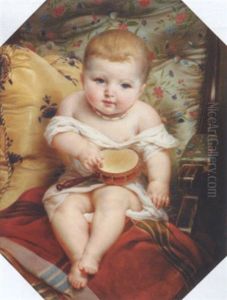Louis Ricquier Paintings
Louis Ricquier, also known as Ludovicus Ricquier, was a Belgian painter born on August 10, 1792, in Antwerp. He was a prominent artist in the 19th century, known for his detailed genre scenes, landscapes, and historical paintings. Ricquier's artistic journey began under the tutelage of his father, who was also a painter. He furthered his education at the Royal Academy of Fine Arts in Antwerp, where he studied under notable artists such as Mattheus Ignatius van Bree.
Ricquier's work reflects the influence of the Flemish tradition, which is evident in his meticulous attention to detail and the clarity of his compositions. His genre scenes often depicted everyday life with a sense of realism and narrative charm, while his historical paintings were marked by a romanticized portrayal of the past, a common trend among 19th-century artists.
Throughout his career, Ricquier enjoyed considerable success and recognition. He participated in numerous exhibitions and his works were sought after by collectors. Despite the popularity of Romanticism during his lifetime, Ricquier maintained a style that combined both traditional and contemporary elements, allowing his work to appeal to a broad audience.
Louis Ricquier lived through a period of significant political and social change in Europe, including the Belgian Revolution of 1830, which led to Belgium's independence from the Netherlands. These historical events may have influenced his work, as artists of the time often reacted to the world around them through their art.
He passed away on February 21, 1884, in Elsene, leaving behind a legacy of art that continues to be appreciated for its historical value and artistic merit. Ricquier's paintings remain part of collections in Belgium and beyond, offering insight into the culture and society of his time.
